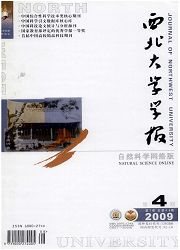

 中文摘要:
中文摘要:
目的基于聚乙醇酸(PGA)是一类无毒、生物相容性好及可在生物体内外降解的高分子材料,在成骨细胞种植基质材料方面具有广泛的应用前景。方法分别采用传统油浴加热和微波辐射的方法,以乙醇酸(GA)为原料,乙酸锌为催化剂,通过熔融缩聚开环的方法合成了乙醇酸聚合物(PGA)。通过核磁共振谱(NMR),傅里叶红外光谱(FTIR),差示扫描量热(DSC),X射线衍射(XRD),接触角(CA),扫描电子显微镜(SEM),原子力显微镜(AFM)等手段对PGA的结构和性能进行研究。结果微波辐射法合成的PGA玻璃化转变温度增加,刚性增强;在酸性条件下,降解较为明显;PGA经氧等离子修饰后,表面自由能增加,亲水、亲油性能均增强。结论采用微波辐射可大大提高反应速率,缩短反应时间。
 英文摘要:
英文摘要:
Aim Poly ( glycolic acid) ( PGA), which was a class of non-toxic, good biocompatibility, and degradation in organisms polymer biomaterials in vivo and in vitro, had been widely used in osteoblast matrix materials. Methods Poly ( glycolic acid) (PGA) was synthesized through the melting polycondensation ring opening route of glycolic acid (GA) in the presence of zinc acetate as catalyst with the help of the traditional oil bath heating or microwave irradiation. The structure and property of the PGA were characterized by nuclear magnetic resonance spectroscopy (NMR), Fourier transform infrared spectroscopy (FI'IR), differential scanning calorimetry (DSC), X- ray diffraction (XRD), contact angle (CA), scanning electron microscopy (SEM) and atomic force microscopy (AFM). Results The results showed that microwave irradiation could greatly enhance the reaction rate, shorten the reaction time. Conclusion Synthesized PGA increased the glass transition temperature and the rigidity compared with oil bathing method. The SEM observations proved that degradation was more obvious under acid conditions for the as-synthesized PGA. The surface for the PGA modified by oxygen plasma increased surface free energy, hydrophilicity and hydrophobicity, respectively.
 同期刊论文项目
同期刊论文项目
 同项目期刊论文
同项目期刊论文
 Characterization and blood compatibility of TiCxN1-x hard coating prepared by plasma electrolytic ca
Characterization and blood compatibility of TiCxN1-x hard coating prepared by plasma electrolytic ca Surface modification of polyethylene film by acrylamide graft and alcoholysis for improvement of ant
Surface modification of polyethylene film by acrylamide graft and alcoholysis for improvement of ant Synthesis and characterization of novel h-HTBN/PEG PU copolymers: effect of surface properties on he
Synthesis and characterization of novel h-HTBN/PEG PU copolymers: effect of surface properties on he 期刊信息
期刊信息
